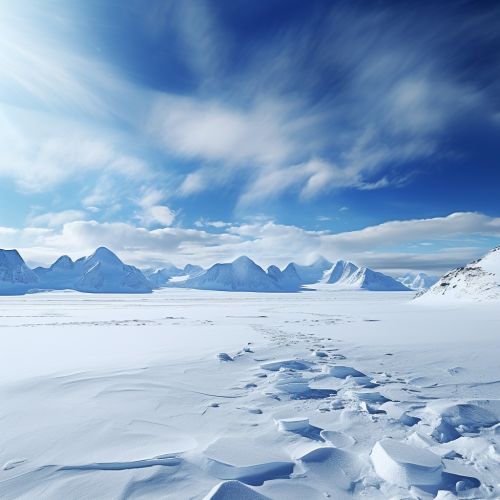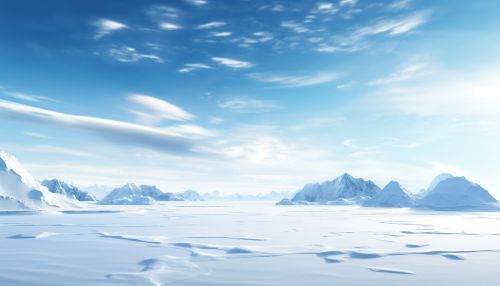Climate change in Antarctica
Introduction
Climate change in Antarctica is a subject of considerable scientific study due to the continent's unique geographical and climatic characteristics. The continent is the coldest, driest, and windiest on Earth, with an average annual temperature of -49°C at the interior. Its isolation and extreme weather conditions make it a unique laboratory for studying the natural and anthropogenic influences on the climate system.


Climate of Antarctica
Antarctica's climate is dominated by its polar ice cap, which has a profound influence on global climate. This ice cap is the largest single mass of ice on Earth, covering an area of almost 14 million square kilometers and containing 26.5 million cubic kilometers of ice. This represents about 90% of all fresh water on the Earth's surface.
The climate of Antarctica is characterized by strong katabatic winds from the interior to the coast. Most of the continent is classified as a cold desert with annual precipitation of only 200 mm along the coast and far less inland. The temperature can vary between -10°C in summer and -60°C in winter in the interior.
Impacts of Climate Change
Climate change is having a significant impact on Antarctica. The Antarctic Peninsula, one of the fastest warming places on Earth, has seen a temperature increase of 2.8°C over the last 50 years. This rapid warming has led to a significant reduction in sea ice and has caused many ice shelves to retreat or collapse.
The loss of sea ice has profound implications for wildlife, particularly for species like the Adélie penguin and krill, which rely on the sea ice for their habitat and food sources. The loss of ice also impacts the albedo effect – the amount of sunlight that is reflected back into space – which can further amplify warming.
The melting of the Antarctic ice sheet is a major concern because of its potential to contribute to global sea level rise. The Antarctic ice sheet holds enough water to raise global sea levels by 58 meters. Current estimates suggest that Antarctica is losing ice at a rate of 159 billion tonnes per year, contributing 0.45 mm per year to global sea level rise.
Causes of Climate Change in Antarctica
The causes of climate change in Antarctica are complex and involve both natural variability and human activities. Natural factors include changes in solar radiation, volcanic activity, and changes in the Earth's orbit and tilt. However, the current warming trend cannot be explained by these factors alone.
Human activities, particularly the burning of fossil fuels and deforestation, have increased the concentration of greenhouse gases in the atmosphere, leading to a rise in global temperatures. This warming is amplified in polar regions due to positive feedback mechanisms, such as the loss of reflective sea ice which leads to more heat being absorbed by the ocean.
Research and Monitoring
Research and monitoring of climate change in Antarctica are carried out by various international organizations and research stations. These include the British Antarctic Survey, the United States Antarctic Program, and the Scientific Committee on Antarctic Research.
These organizations conduct a range of research, from long-term climate monitoring to studying the impacts of climate change on Antarctic ecosystems. This research is crucial for improving our understanding of the Antarctic climate system and predicting future changes.
Conclusion
Climate change in Antarctica has far-reaching implications, not just for the Antarctic ecosystem, but for the global climate system. The loss of Antarctic ice contributes to global sea level rise, posing a significant threat to coastal communities around the world. Understanding the causes and impacts of Antarctic climate change is crucial for informing global climate policy and action.
